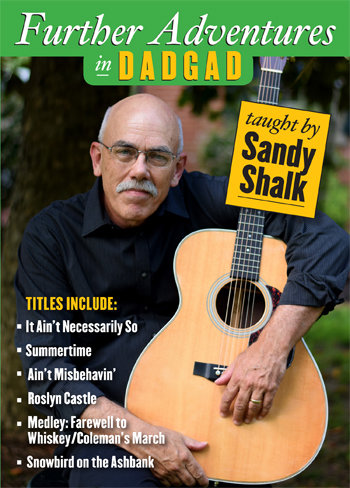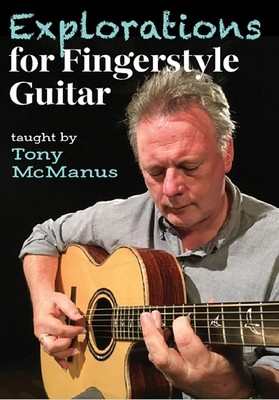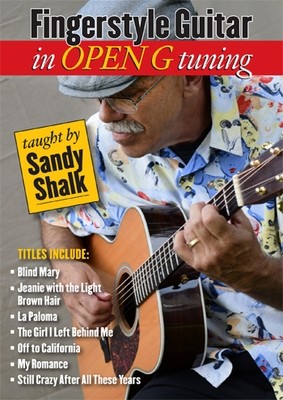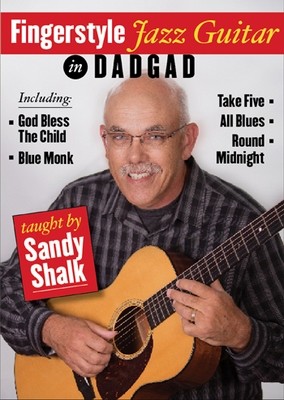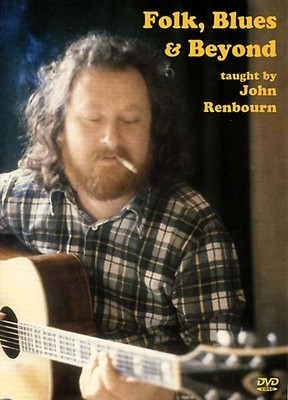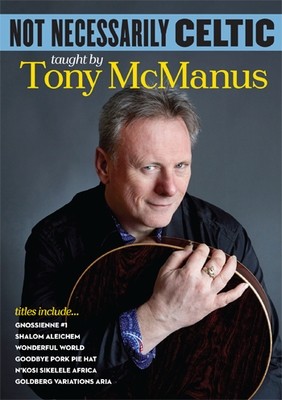
Further Adventures in DADGAD - taught by Sandy Shalk
Arranging and performing tunes in DADGAD lends itself to fresh approaches to tunes we have come to love. The arrangements of its pioneer, British guitarist Davy Graham, make clear that playing in DADGAD is a way of making the familiar seem new. There is a rich heritage of tunes arranged in this special tuning, but there is still much territory to be explored for the fingerstyle guitarist. In this lesson, Sandy Shalk teaches an eclectic mix of tunes arranged in DADGAD including jazz, Celtic and fiddle tunes.
There are two tunes from the legendary George Gershwin's Porgy and Bess (It Ain't Necessary So and Summertime). Sandy's arrangement includes the melody and improvisational sections. Fats Waller's Ain't Misbehavin' was voted one of the 365 songs of last century. Fats claimed the song was written while "lodging" in alimony prison, and that is why he was not "misbehaving". Sandy's arrangement captures the spirit of this 1929 jazz standard. All three tunes are core to the jazz repertoire.
Over the last 20 years DADGAD has been widely used in arranging American fiddle tunes and Celtic melodies. Sandy teaches four examples with Roslyn Castle, Farewell to Whiskey, Coleman's March and Snowbird on the Ashbank.
Each tune is performed and then taught phrase by phase. The arrangements are then played slowly on a split screen in order to see the movement of both hands. A tab/music booklet is included as a PDF file on the DVD featuring each of the arrangements.
Further Adventures in DADGAD is a companion to Sandy's lesson Fingerstyle Jazz Guitar in DADGAD (GW1022).
Titles include: It Ain't Necessarily So, Summertime, Ain't Misbehavin', Roslyn Castle, Medley: Farewell to Whiskey/Coleman's March and Snowbird on the Ashbank
121 minutes - Level 2/3 - Detailed tab/music PDF booklet on the DVD
Review: This instructional video is a follow-up to Sandy Shalk's 2014 lesson, Fingerstyle Jazz Guitar in DADGAD, in which Shalk discussed his interest in classic jazz and covered typical chord sequences, voicings, and alterations. On Further Adventures... he jumps right into teaching three 1930s tunes: the Gershwin's "It Ain't Necessarily So" and "Summertime," and Fats Waller's "Ain't Misbehavin'." He then shifts from jazz into Celtic and Appalachian music, teaching "Roslyn Castle" and a medley of "Farewell to Whiskey" and "Coleman's March," and ends with "Snowbird on the Ashbank." His clear explanations and friendly manner draw in the viewer and make the lesson easy to follow. Shalk's jazz arrangements are approachable for intermediate guitarists but sophisticated enough to interest those who are familiar with these tunes and looking for ideas to spice up their own arrangements. "It Ain't Necessarily So" offers introductory chord vamps, a melody played in a relatively high register for DADGAD tuning, and an effective variation. "Summertime" includes interesting movement in the bass and middle registers that's usually heard only in orchestral arrangements of the tune, not in solo or jazz ensemble performances. "Ain't Misbehavin'" swings along nicely and, like the other jazz tunes taught here, will help DADGAD players expand their horizons. The Celtic and Appalachian tunes are pleasing, simpler than Shalk's jazz arrangements, and more typical of other players' approach to DADGAD. The stately "Roslyn Castle" includes nice counterpoint lines and reminds me of John Renbourn's Celtic and English pieces on his 1970s albums: The Hermit and The Black Balloon. Shalk's sensitive renderings of "Farewell to Whiskey" and "Coleman's March" call El McMeen to mind. On "Snowbird on the Ashbank," Shalk plays the melody on the guitar's middle strings, voiced lower than when played on the fiddle. In doing so he follows the practice of other DADGAD players like McMeen and Steve Baughman. Each tune in the lesson features a complete performance, then discussion and split screen presentation of each section, showing Shalk's left and right hands. An 18-page booklet, presenting the tunes in standard musical notation and tablature, is included as a PDF file. Sandy Shalk continues to introduce new approaches to acoustic fingerstyle, which he shares with his growing audience. - Patrick Ragains/Minor7th
